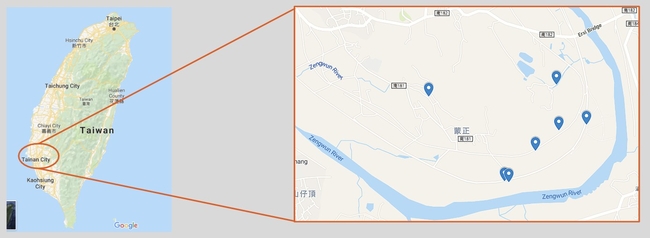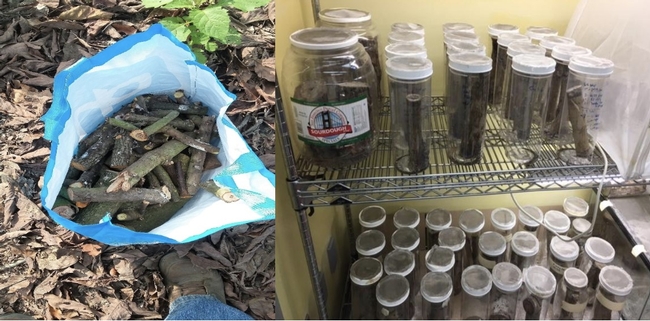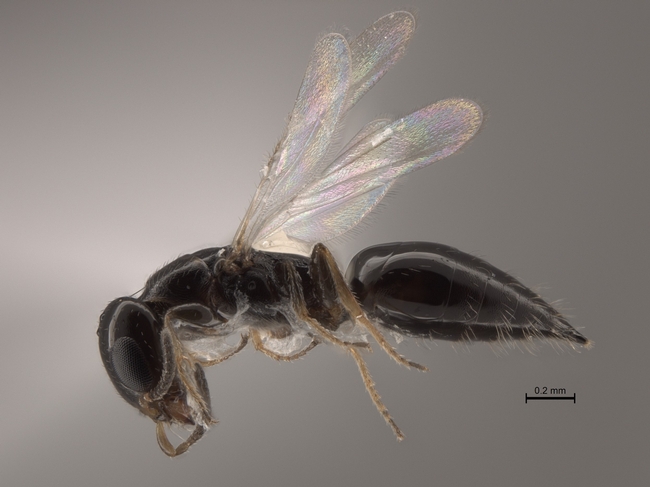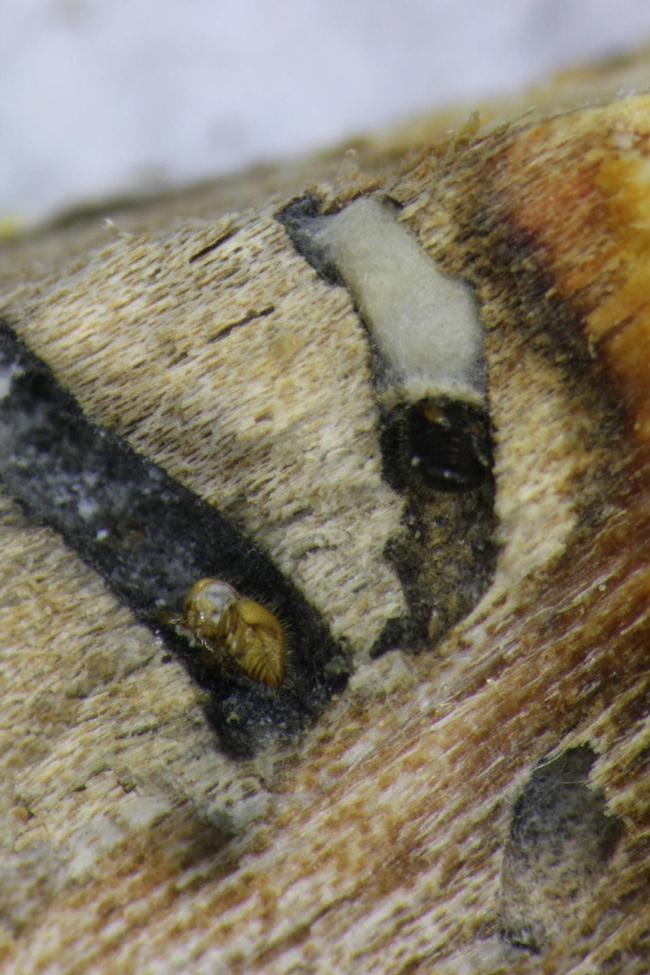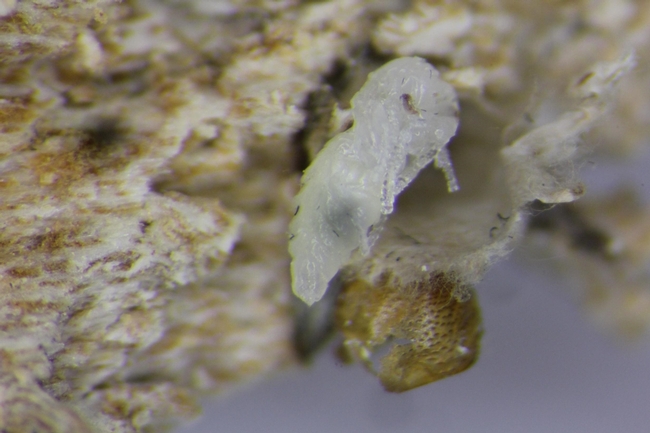A “boring” problem that's generating
big interest in southern California
By Deena Husein, UCR Entomology, Ph.D. Candidate, Stouthamer Lab, UC Riverside
It has been a little over a decade since the first sighting of the polyphagous shot hole borer (PSHB) in Los Angeles County, yet a reliable control method has not been established. Part of the setback was caused by the misidentification of the species due to the beetle having a similar appearance to a low-risk pest — the tea shot hole borer. Aside from Los Angeles County, the PSHB is now established in Ventura, Orange, Riverside, San Bernardino and Santa Barbara Counties. We should be very alarmed at the rate the beetle has spread in southern California! The PSHB bores tunnels, also called galleries, in the xylem of the plant host and compromises the water transportation system. Tissue damage on the plant host is not only caused by the boring action alone, but also by the symbiotic, yet pathogenic, fungi the beetles carry to inoculate the gallery walls and utilize as a food resource. Consequently, the fungal buildup obstructs more water from reaching the branches, which can lead to dieback symptoms and eventually the mortality of the tree. The underlying issue lies in the gradual increase of plant species susceptible to being attacked. Currently, there are over 300 plants, 60 of which the beetle can reproduce on, including several native oaks, maples, sycamores, and willows along with ornamental plants and major agricultural crops (avocado) (Eskalen et al. 2013). A study by McPherson et al. 2017 showed that 23.2 million trees (32.8%) of southern California's region are susceptible to attacks by the PSHB beetle. Should half become infested, the approximate cost of removing and replacing those trees will be $15.9 billion with an annual accruement of $616.9 million over the next 10 years. The damage and loss the beetles have already costed the state will only continue to rise without the establishment of an effective management program.
We understand that this pest is a major threat to the forestry and agricultural industry, but what efforts have been made to stop it? So far, conventional methods such as pesticides and mate disruption through pheromone traps have been rendered ineffective due to the beetle's cryptic lifestyle. The PSHB mates prior to leaving its natal gallery and is only outside for a brief period of time spent entirely on finding a suitable plant host. With that in mind, our laboratory has taken a different course of action that focuses entirely on biological control. Analyses of beetles sampled worldwide paved the path to a foreign exploration trip to Taiwan in the hopes of finding promising natural enemies of the PSBH. Since we are dealing with a wood boring beetle that remains hidden inside of its host, the best approach to encounter any natural enemy is by collecting beetle-infested plant material such as logs. The collection sites can be seen on the map below, all of which were in the district of Tainan City. Infested logs were shipped to the Insectary and Quarantine facility located at the University of California, Riverside (Figure 1A). From there, logs were individually placed in separate containers and monitored daily for anything that emerged (Figure 1B). After three trips and many logs later, we were able to identify three promising parasitoid wasps and two fungal-feeding nematodes associated with the PSHB.
The first parasitoid wasp we have encountered belongs in the family Bethylidae (Figure 2). A closely related species in the same genus has been documented to parasitize the coffee berry borer, another invasive pest with a similar lifestyle to the PSHB. While breaking apart some of the logs, we were able to find parasitized beetles with silk cocoons extending from their heads. Inside one of these cocoons was a bethylid pupa, which looks very promising (Figure 3). The second parasitoid is a braconid with an interesting method of attack. This novel species in the genus Sinuatophorus has prominent and large mandibles to 1) remove any excess material, such as frass and sawdust, at the entrance of the beetle gallery then 2) clasp the head of the beetle and eventually parasitize it. However, most taxonomic descriptions of wasps in this genus always cite Seitner and Notzel's publication from 1925, which mainly focuses on the development and lifecycle of another closely related wasp in a different genus. This poses as a challenge since our understanding of the lifecycle of this novel wasp is limited. Despite this setback, we were able to rear 4 generations by reintroducing every newly emerged wasp to multiple PSHB-infested castor bean logs.
The third parasitoid belongs to a very small, yet unique, group. Not only does this wasp attack beetles in their adult stage, but it also lays two eggs: one male and one female. Once fully developed, the female chews a hole from the inside of the abdomen and creates an exit path for herself and the male wasp. But the excitement doesn't stop there! While rearing beetles that emerged from the shipped logs, we were able to come across multiple nematodes. While most of them appeared harmless, some were categorized as fungal feeders. By introducing these fungal-feeding nematodes to beetle galleries, we could potentially use them as an indirect approach to mitigate the population of the beetles by attacking their food supply.
We have come pretty far in the past three years and are now able to narrow our efforts on these natural enemies. Though, as is the case with most biological control programs, there are many challenges and failures that will be faced. Our biggest hurdle to overcome is the cryptic lifestyle of the beetle. Once we introduce newly emerged wasps to beetle-infested logs, any control we have over the rearing process is taken away. Basically, this becomes a black box with no way of observing any parasitization occurring inside without breaking into the logs and jeopardize killing the insects by accident. We are currently trying to improve our rearing methods in the hopes of increasing our wasp colony size. Eventually with large numbers, we can move forward with non-target testing and come to a decision on whether or not we can utilize these natural enemies as a biological control agents to suppress the PSHB population.
Map: collection sites of PSHB beetle-infested avocado logs from Tainan City, Taiwan.
Figure 1A (left): Bag with beetle-infested avocado logs from Taiwan. Figure 1B (right): Temperature-controlled room with logs separated in plastic containers in the Insectary and Quarantine facility at UCR.
Figure 2:Image taken of Bethylid adult that emerged from beetle-infested avocado logs collected from Taiwan. Credit: Iris Chien
Figure 3 (top): Parasitized PSHB found with a silk cocoon extended from the head of the beetle. Bottom:A cocoon was dissected, adjacent from the intact cocoon, with a visible bethylid pupa.
Read and see more at:
http://ceventura.ucanr.edu/newsletters/Topics_in_Subtropics80946.pdf
Literature Cited:
Eskalen, A., Stouthamer, R., Lynch, S. C., Rugman-Jones, P. F., Twizeyimana, M.,
Gonzalez, A., and Thibault, T. (2013). Host range of Fusarium dieback and its
ambrosia beetle (Coleoptera: Scolytinae) vector in Southern California. Plant Dis,
97(7), 938–951.
McPherson, G., Xiao, Q., Van Doorn, N. S., De Goede, L., Bjorkman, J., Hollander, A., Boynton, R. M., Quinn, J. F., and Thorne, J. H. (2017) The structure, function and value of urban forests in California communities.Urban Forestry & Urban Gardening 28: 43-53.
Seitner, M. and Notzl, P. (1925). Pityophthorus Henscheli Seitner und sein Parasit
Cosrnophorus Henscheli Ruschka.
